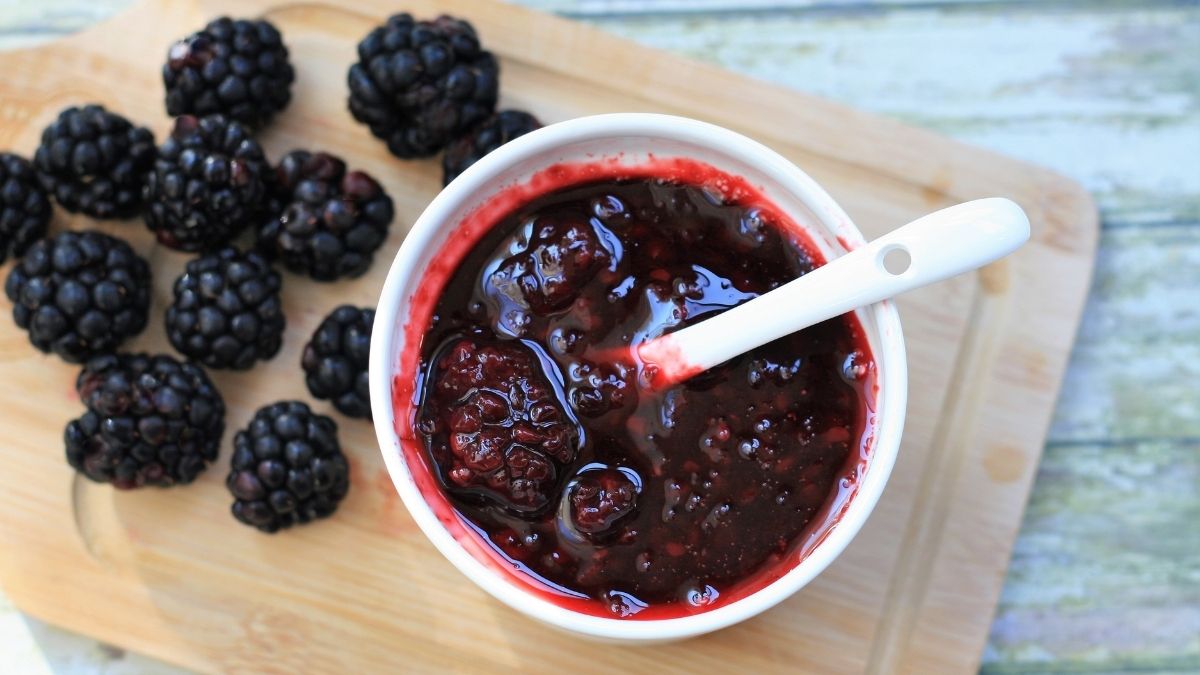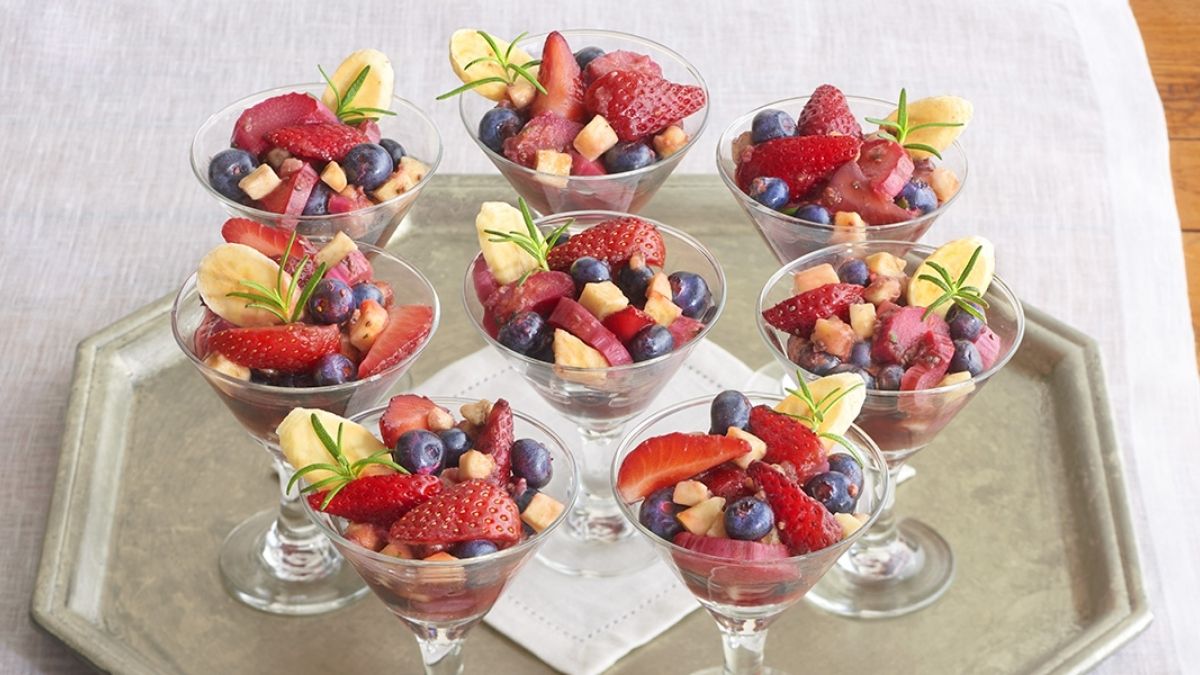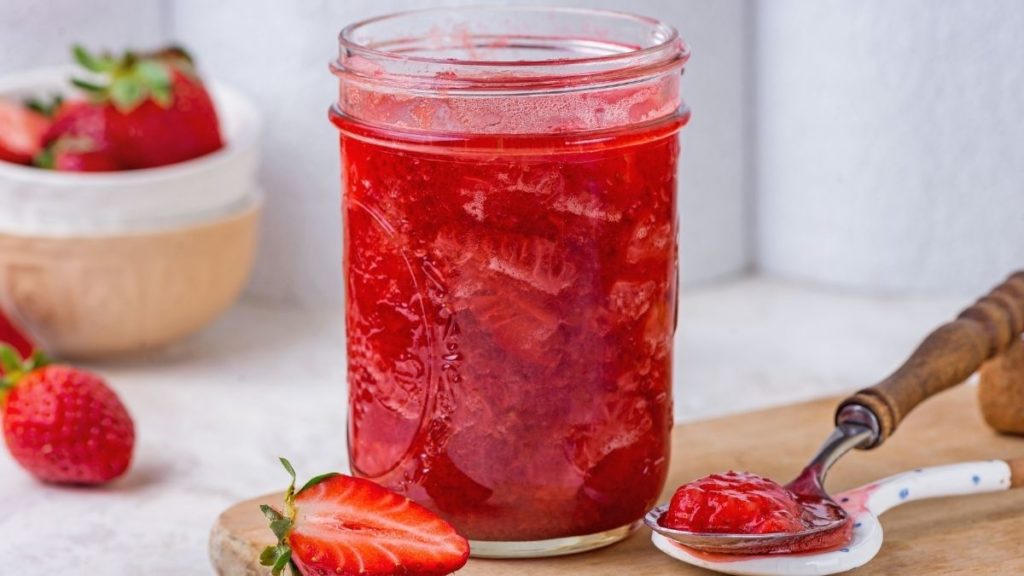A colourful fruit compote is a great way to end a casual or holiday meal, whether on its own or with other desserts. A compote is a fresh, canned, or dried fruit cooked in a syrup made of sugar and other flavourings.
In a compote, the fruit is cut into chunks. When dried fruit is used to make a compote, it is usually first soaked in water to soften it. Compote recipes sometimes include wine, brandy, rum or liqueur. Figs, pears, apples, plums, berries, and rhubarb are also often mixed to make fruit compote. Recipes for Compote often call for other flavors, like vanilla, cinnamon, citrus peels, and cloves. Almost always, they are served with chunks of fruit in the mix. A coulis is a better name for a mix of pureed fruits. The Compote is meant to be eaten immediately, but you can keep it in the fridge for a short time.
What is a Compote?
Compote is a fruit spread made by mixing whole or chopped fruit with sugar syrup. It is cooked slowly to give it its unique flavor. Compotes can be flavored with spices or a little liquor, and some recipes call for thickeners like powdered pectin to make the mixture thicker. Depending on the recipe, Compote can be spread like jam or have more fruit pulp like puréed fruit. The size of the fruit pieces and the amount of pectin in a recipe will determine the density and amount of solids. Less pectin means a smoother compote.
Fruit compote is a cooked dessert made from various fruits and thick, rich syrup. The fruit is cooked over low heat to warm and break it up. The finished dish can be served warm or cold. It is often served with whipped cream or spooned on top of ice cream, but it can also be used in many other ways. Fruit compote is made in many different ways and is especially popular in winter. It is also very easy to make at home, and people can add different fruits to make their versions.
It’s unclear where this dessert came from since many cultures have some sweet fruit dishes stewed. The fruit compote served on this holiday is meant to bring sweet wishes and good luck for the coming year. Some might think of this dish because it is warm during the winter holidays. Fruit is, of course, the main ingredient in fruit compote. In some versions, dried fruit was used, while a berry compote was made in others. Some compotes have a theme, like tropical fruit compote. Other compotes use summer fruits preserved in syrup or a mix of whatever looks good. Depending on what kind of fruit is used, the level of spice and sweetness is often changed to make the dish taste its best.
8 Ways to Serve Compote
A compote goes with almost everything you eat, from bread and desserts to pork and cheeses. You can serve Compote hot, cold, chunky, or smooth, which makes it a very versatile topping, sauce, or addition to many dishes.
1. Top Off a Custard
A dessert can be built around a fruit compote. Simple desserts like plain custard or vanilla ice cream can be made more interesting with a colorful and tasty compote. A cranberry compote can go well with these desserts because the tart fruit goes well with the sweetness of the cream or custard.
2. Use it as a Side for Cheese Platters
Compotes are often served with cheese platters and can be put between a cracker and the kind of cheese you choose. A sweet blueberry compote goes well with a cheese-like brie that is milky, smooth, and soft, and a strawberry and rhubarb compote goes well with cheddar.
3. Mix in with Yogurt
A natural sweetener like a compote can make plain Greek yogurt taste better. This is a good way to get some fruit into your breakfast. You can use any Compote, like apple, apricot, or peach.
4. Add to French Toast
For a sweeter brunch, fry some French toast or make waffles, crepes, or pancakes and top them with a compote of your choice. Hot Compote can work well as consistency, especially if you drizzle the dish with heated maple syrup.
5. Sweeten a Scone
Scones are sometimes made to be dry, so a little butter and Compote on top can make them more interesting and let you change the way they taste. Serve with fruit juice or a side of dried fruit that goes well with the flavors in your Compote.
6. Adorn Meat
A rack of lamb or a pork chop can be made even better with an apple compote. Add a pinch of cinnamon to your apple compote and a pinch of maple syrup to your meat glaze to make it taste like fall.
7. Spoon a top Cheesecake
The even top of a New York cheesecake, one of the smoothest desserts, can be the perfect place to put a mushy compote to make a photo-ready dessert. You can use citrus peels to decorate the plate or cake when making a lemon cheesecake.
8. Serve it on its Own
A compote with whole fruits that have only been lightly cooked can also be a snack or dessert. You can also mix several fruits into one Compote. For example, make a berry compote with raspberries, blackberries, and strawberries, add a dollop of whipped cream on top and serve.
Compote vs. Jam: What’s the Difference?
Compote and jam are similar enough that you can use one instead of the other with some adjustments. There are two main ways in which jam and Compote are different:
1. Spreadability:
Compote is not as easy to spread. Most jams are about the same thickness, making them easy to spread. Compote, which can have whole fruit pieces, can be harder to spread evenly.
2. Storage:
Jam is made to last longer in the fridge than Compote. The average jar of jam has more sugar than most compotes, which keeps the number of calories a little lower, but you lose the ability of sugar to keep things fresh. Because of this, Compote usually stays good in the fridge for about two weeks, while an opened jar of jam can last for a month or more.
Fruit butter, marmalade, and jelly differ from Compote and jam. Apple butter is a good choice if you want something with no added sugar. If you like the taste of citrus peels, you might like grapefruit or orange marmalade, where citrus peels are a key ingredient. Jelly, mostly fruit juice, sugar, and pectin, is a good choice if you want a spread that sticks together well.
How Long does Compote Last?
Compotes are sweeter than chutneys and don’t usually last long in a jar or can. This makes them different from fruit preserves, jams, jellies, and even marmalades, which use citrus fruit or juice mixed with citrus rinds. Most of the time, a compote is made to go with another dish, like a dessert or a piece of meat. Compotes should be eaten soon after they are made. Because this process takes so little time, chefs can use less sweetener than they would in fruit jam recipes since they don’t need the power of sugar to keep the jam from going bad.
How to Make a Simple Fruit Compote?
There are a lot of recipes for fruit compote on the internet, and it’s best to follow one. However, in general, all you need for a simple fruit compote is a mix of fresh fruits, canned fruits, or dried fruits that have been softened. You put the fruit in a saucepan or pot and add juice, wine, or syrup to get things going. Be careful not to add too much liquid because as the fruit cooks, it will give off its water. If some of the fruit tastes sour, add some sugar to the pot. Add more flavor using ginger, cinnamon or vanilla to taste. Try not to crush all of the fruit while stirring the fruit in the pot as it simmers. Your Compote will be thick and ready to take off the heat after about 15 minutes.
How to Freeze Compote?
Compote is a simple way to use leftover fruit and give your fruits a little more flavor. You can eat Compote by itself, spread it on toast, or add it to yogurt or other desserts to make them taste even better. You might not be able to eat all of the Compote you make in the time it can be kept in the fridge. If that’s the case, you can also freeze it by following these steps:
Prepare
Follow your favorite recipe to make your Compote. Try different flavors and spices to make a compote that tastes great.
Leave to cool
Once you’ve cooked your Compote, please give t a lot of time to cool down before putting it in the freezer.
Portion
Spoon your cooled Compote into containers or bags that can be frozen.
Seal
If using ziplock bags, press out as much air as possible before you seal them. Make sure the bag or container you use doesn’t let air in.
Label
Write what’s inside the freezer bags or containers and the date they were put in the freezer.
Freeze
Put the containers in the freezer; you can keep them frozen for up to 3 months.
Conclusion
The word “compote” comes from the French word “mélange,” which means “mix.” This dessert came from Europe in the Middle Ages; even back then, it was easy to make dessert. Since they were first made, not much has changed about the idea of compotes. Compotes are used in the food of almost every country. To make this dish, start with syrup with three-quarters of a cup of water, one-half cup of sugar, two teaspoons of lemon juice, and one teaspoon of vanilla or liqueur. Simmer this mixture until the sugar is dissolved. Next, add the chopped fruit and cook it on low heat until the fruit starts to soften.
When mixing hard and soft fruits, add the soft ones last, so they don’t get cooked away while the hard ones cook. The time it takes to cook depends on each person’s taste. Some cooks just briefly warm the fruit, while others stew it until it is soft and even. When the fruit compote is done, you can serve it warm or cold. Large open dessert glasses are an excellent serving vessel for plain Compote. It can also be spooned over other desserts, like cake, or used as a side dish or decoration on a full dessert plate. This dish is often topped with mint leaves if fresh mint is available.


